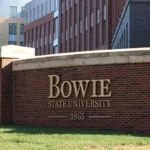by James Rada Jr.
During the school year, Elizabeth Mahoney, a junior at Francis Scott Key High School, often rolls out of bed at 5 a.m. to finish her homework before she gets ready and heads out to catch the school bus at 6:50 a.m. She takes a challenging course load but still maintains her straight-A average. After school, she competes in soccer or track. From there, she often goes to rugby practice with the West Carroll Marauders. She gets home around 8 p.m. and still has to eat dinner and start on her homework before turning in around 11 p.m.
“If I didn’t have all this, I’d just be sitting at the house doing nothing,” she said.
The alternative to being actively engaged in sports, clubs, band, drama or any other extracurricular activity is often inactivity, which leads to health problems and increased technology use, which comes with its own pitfalls. According to a 2010 Kaiser Family Foundation study, teenagers average more than 11 hours a day using technology. Having a digital social network is not a bad thing, but the negative impacts start to pile up if it’s a person’s only social network.
Benefits
Getting teenagers involved in extracurricular activities like sports, clubs, and even jobs, brings them a multitude of benefits. Studies have shown that positive things happen to students when they have a broader focus than just grades.
Social Skills: Students who take part in sports and clubs meet a new circle of acquaintances who can become friends. They learn how to interact with people outside of the classroom. “Anecdotally, we see students who have their time filled with activities seem to be less drawn to more risk-taking behaviors,” Judy Klinger, Carroll County public schools supervisor of school counseling, said.
Time Management: As students’ schedules become crowded with both school and extracurriculars, they learn to prioritize, minimize wasted time, and be more efficient with the time they do have. It also leads to students procrastinating less.
Commitment and Consequences: Students who have to show up for practices or meetings learn commitment. If those meetings and practices are also tied to being able to compete, they learn about consequences. These are useful skills to have when an employer expects employees to show up and earn a raise based on performance.
Exposure to New Activities: While students will take part in clubs and sports based on an interest in the activity, they might not have a strong interest in it … yet. The participation gives them a chance to explore how interested they are in the activity and whether they want to pursue it at a higher level.
Improved Academic Performance: Extracurricular activities often help a student’s grades. The belief is many activities force them to manage their time better and be more organized. Extracurricular clubs can also teach skills that can be applied in the classroom that help grades.
Less Likely to Drop Out: According to the National Center for Education Statistics, “participation in extracurricular activities may increase students’ sense of engagement or attachment to their school, and thereby decrease the likelihood of school failure and dropping out.” Klinger agreed. “Students feel like they belong and that they are part of the school,” she said.
Financial Aid: College tuition is expensive even at the community college level, but extracurricular activities open up opportunities for students who take part in those activities. While sports scholarships are common, music, drama, ROTC, student government and other activities also open doors to scholarship opportunities. Elizabeth said that a couple of colleges have already spoken to her about playing rugby at their schools.
“There a lot of benefits to extracurricular activities, and colleges get well-rounded students,” Klinger said.
Getting into college
With Carroll County public schools graduating over 2,100 seniors each year, those students find themselves in competition with hundreds of thousands of other seniors across the country for seats in the freshman classes of top universities. Many of those students have 4.0 GPAs and high SAT scores. What can make the difference whether they get into their first-choice school or not is their extracurricular activities.
Elizabeth plays on the school soccer team, indoor track team, and outdoor track team. She is a National Honor Society member, class president, Academic Challenge team member, band member, and chorus member. She sees it as “getting her name out there,” so hopefully colleges notice her.
“College is so competitive now, I need to do all of these things if I want to go to the college I want and be successful,” Elizabeth said.
Colleges and universities no longer rely on a student’s grade point average and standardized test scores as the only indicators for whether a student should attend the school. They also take into consideration how rigorous the course load is and how the student impacted his or her community through volunteering and extracurricular activities.
Heidi Reigel, McDaniel College associate director of admissions, said that during the interview process, “There’s that aha! moment, and you see and know you can develop a leader here.”
Although the admission counselors want students to grow while attending college, they also don’t want to throw them into a situation that is above their ability to handle.
Getting ready for college starts years before students apply.
“Anything students can do to enhance themselves and their academic schedule has always been something counselors encourage students to do,” said Klinger.
Reigel said that in a choice between two strong academic students, one of whom also takes part in extracurricular activities, the student with the extracurricular activities demonstrates strong time management skills in balancing academics and activities. This is a skill that is useful for students who need to manage their own schedules in college.
Elizabeth agreed. “If I do this well when I’m in school and college, I will go further in life,” she said.
She has in interest in pursuing a STEM (science, technology, engineering, and math) career. Getting into a good college with a reputation for strong STEM programs is sure to be a competitive process, so she is looking for every advantage she can get. Having a list of clubs and activities on her application will be one such advantage.
“Colleges are competitive,” Klinger said. “You have to demonstrate your involvement in a variety of activities.”
Cautions
While the benefits are great, many parents worry about their children burning themselves out with too many activities or simply not being able to enjoy their childhoods.
“When you have a student with four to six AP classes, a job, sports, and volunteer activities, we recognize it can be very demanding,” Klinger said.
This is where it becomes important to learn to strike a balance between school, home, and activities. Too many extracurricular activities can leave a student without enough time to study or do homework. Elizabeth said that although her schedule can be very busy, she got “used to it.”
How much is too much varies between students. It’s better to gradually add activities once the student knows they can handle the demands of their current workload. A student shouldn’t start the school year by joining half a dozen clubs and sports. The demands will be quickly overwhelming.
Work up to it. Join a couple clubs. Make sure that grades can be maintained as well as club commitments. If so, then add another activity if it is desired.
A parent’s schedule should also be considered. Parents often pick up and drop off their children at their activities. Too many activities and the parents will find themselves spending more time on the road than at home.
“I owe so much to my parents,” Elizabeth said. “They drive me where I need to be, and if they can’t, they make my brother drive.” However, she also points out she is eager to get her license and a car so she can drive herself.
She may be an overachieving teenager, but she is still a teenager.













